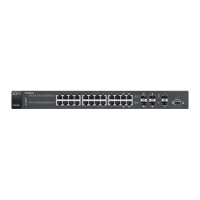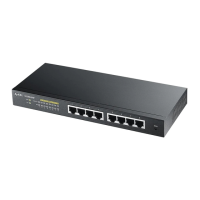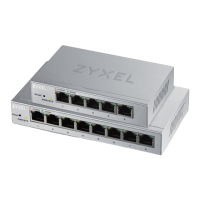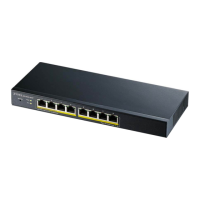GS1500-24P User’s Guide
59
CHAPTER 7
Link Aggregation
7.1 Overview
This chapter shows you how to logically aggregate physical links to form one
logical, higher-bandwidth link.
Link aggregation (trunking) is the grouping of physical ports into one logical
higher-capacity link. You may want to trunk ports if for example, it is cheaper to
use multiple lower-speed links than to under-utilize a high-speed, but more costly,
single-port link. However, the more ports you aggregate then the fewer available
ports you have. A trunk group is one logical link containing multiple ports.
The beginning port of each trunk group must be physically connected to form a
trunk group.
7.2 What You Can Do
•Use the Trunk Group Setting screen (Section 7.4 on page 60) to assign ports
to be part of a trunk group.
•Use the Trunk Distribution Algorithm screen (Section 7.5 on page 62) to
configure the trunk distribution algorithm for the trunk groups.
•Use the LACP Setting screen (Section 7.6 on page 63) to enable Link
Aggregation Control Protocol (LACP).
7.3 What You Need to Know
The Switch supports both static and dynamic link aggregation.
Note: In a properly planned network, it is recommended to implement static link
aggregation only. This ensures increased network stability and control over the
trunk groups on your Switch.
See Section 7.7.1 on page 64 for a static port trunking example.
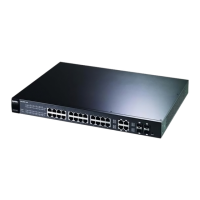
